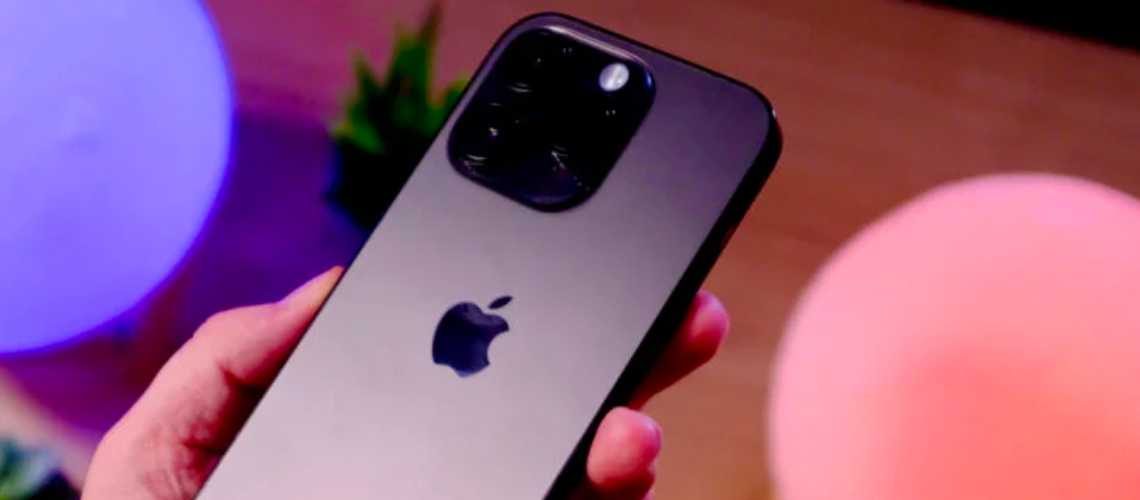In the universe of Apple, your Apple ID is the magic key that unlocks a range of services, from iCloud and the App Store to Apple Music. This blog post offers a comprehensive guide on how to change your Apple ID on your iPhone, a task you may need to undertake for reasons like email address updates, moving to a new iPhone, or potential Apple ID compromises.
Table of Contents
ToggleStep-by-Step Instructions on How to Change the Apple ID on iPhone
Effectively using your iPhone begins with knowing how to change the Apple ID on iPhone. As your central identity in the Apple universe, adjusting it directly impacts your access to various Apple services and devices.
- Open ‘Settings’ on your iPhone: This is the grey gear icon typically found on your home screen.
- Tap on ‘[Your Name]’ at the top of the screen: This will open up your account settings.
- Tap on the ‘Apple ID’ option: This will lead you to the main account settings for your Apple ID.
- Tap on ‘Change Apple ID’: You will be prompted to enter your current Apple ID and password for security purposes.
- Enter your current Apple ID and password: Make sure to input your current Apple ID and password correctly to avoid any errors.
- Enter the new email address that you want to use as your new Apple ID: This email address will replace the old one in your Apple ecosystem.
- Tap on ‘Next’: This will send a verification email to the new email address you just entered.
- Follow the instructions to verify your new email address: Typically, this involves opening the email you received and clicking a verification link.
- Tap ‘Done’ once the process is completed.
Remember, changing your Apple ID doesn’t automatically change the Apple ID being used in services like iCloud or iMessage. Be sure to update these settings separately.
Transitioning Data: How to Set Up New iPhone from Old iPhone
When upgrading to a new iPhone, one of the most critical aspects is the secure transfer of your data, apps, and settings from your old device. Using your recently updated Apple ID, you can streamline this process and ensure a smooth transition. Here’s a detailed step-by-step guide on how to set up a new iPhone from an old iPhone:
1. Prepare Your Old iPhone
While Interactive Brokers’ trading platforms are packed with features and tools, their complexity can be overwhelming for beginners. There’s a steep learning curve associated with understanding and effectively utilizing these platforms, particularly the Trader Workstation (TWS).
2. Power on Your New iPhone
Turn on your new device and follow the onscreen setup until you reach the Apps & Data screen. Here, you will be given four options. Select Transfer from iPhone to use the QuickStart, or Restore from iCloud Backup if your old iPhone isn’t accessible.
3. Use QuickStart
For iPhones running iOS 11 or later, you can use the QuickStart feature. Bring your old iPhone near the new one and an animation will appear on the new iPhone’s screen. Scan this using your old iPhone’s camera and enter your old iPhone’s passcode on the new iPhone.
4. Activate Transfer
After the QuickStart, your data will begin to transfer. Ensure both devices are connected to Wi-Fi and have enough power to complete the process, which could take a while depending on the amount of data to be transferred.
5. Sign in with Your Apple ID
Your recently updated Apple ID comes into play here. On your new iPhone, when prompted, sign in to your Apple ID to restore all your apps and purchases. If you have multiple Apple IDs, you can log in to all of them.
6. Set Up Your New iPhone
Follow the onscreen instructions to set up Face ID or Touch ID on your new iPhone. Then, when prompted, enter your Apple ID password on your new iPhone.
7. Restore Your Data and Apps
Choose to restore your apps, data, and settings from your most recent iCloud backup. Tap Restore from iCloud Backup and sign into your iCloud account to proceed. If you purchase iTunes or App Store content from multiple Apple IDs, you will need to sign in to each.
8. Finishing Up
Allow your new iPhone to complete the restore process. This may take some time, depending on your internet connection and the amount of data being restored. Once done, complete the remaining onscreen instructions, and your new iPhone will be ready to use!
Setting up your new iPhone from your old one is a process that requires time and patience. With this guide, you can ensure that all your cherished data, apps, and settings are smoothly migrated to your new device.
Streamlining Mobile Payments: How to Set Up Apple Pay on iPhone
After transitioning your Apple ID and successfully setting up your new iPhone, the next step is to configure Apple Pay. Doing so will streamline your mobile transactions, offer a secure and private way to pay, and further consolidate your digital life under your new Apple ID. Below is a step-by-step guide on how to set up Apple Pay on your iPhone:
1. Launch the Wallet App
Find the Wallet app on your iPhone, which comes pre-installed. Tap the app to open it.
2. Tap on the Plus Sign
Once you’ve opened the Wallet app, you’ll see a plus sign in the upper right-hand corner of the screen. Tap on this to add a new card to Apple Pay.
3. Follow the Prompts
You’ll then be guided through the process of setting up Apple Pay. Tap the Next button on the Apple Pay screen.
4. Add Your Card Information
Next, you’ll need to enter your card details. You can choose to manually input the information or scan your card using the iPhone’s camera.
5. Agree to Terms and Conditions
After entering your card details, you’ll be prompted to agree to the terms and conditions. Once you’ve read and understood these, tap Agree.
6. Verifying Your Card
Your bank or card issuer will then need to verify your information. Depending on the bank, this process might involve an app, a text message, an email, or a quick phone call.
7. Tap Next After Verification
After your bank verifies your information, tap Next. Your bank or card issuer will then add your card to Apple Pay.
8. Start Using Apple Pay
Once your card is added, you can start using Apple Pay to make purchases in stores, in apps, and on the web.
Learning how to set up Apple Pay on your iPhone is a crucial step in getting the most out of your new device. It not only allows for seamless transactions but also enhances the integration of all Apple services under your updated Apple ID, thus providing a complete and connected iOS experience.
Troubleshooting
Two-Factor Authentication
If you have two-factor authentication enabled, Apple will send a verification code to one of your trusted devices (for instance, an iPad or a Mac computer associated with your Apple ID). You’ll need to enter this code to proceed with the Apple ID change.
Email Verification Issues
If you’re having trouble verifying your new email address (e.g., you did not receive the verification email), first, check your spam or junk folder. If you still can’t find the verification email, you can try resending the verification code from your iPhone settings. Should the problem persist, contacting Apple Support would be a good next step. They have dedicated support staff to help with such issues.
Institutional Accounts
These are designed for larger entities such as corporations, partnerships, LLCs, and unincorporated legal structures. They are suitable for organizations looking to access the broad range of products offered by Interactive Brokers on a larger scale.
The main aim is to make each step as clear as possible, minimizing ambiguity for readers of various technical skill levels. The expanded troubleshooting section also now provides more practical guidance.
Conclusion: Recap on Changing Your Apple ID
We’ve covered the steps for how to change your Apple ID on your iPhone, how to set up a new iPhone with a new Apple ID, and how to set up Apple Pay on your new device. For a more detailed guide, do visit Apple’s official support documentation on changing your Apple ID.
Stay with us for more updates about the latest news of tech trends.

